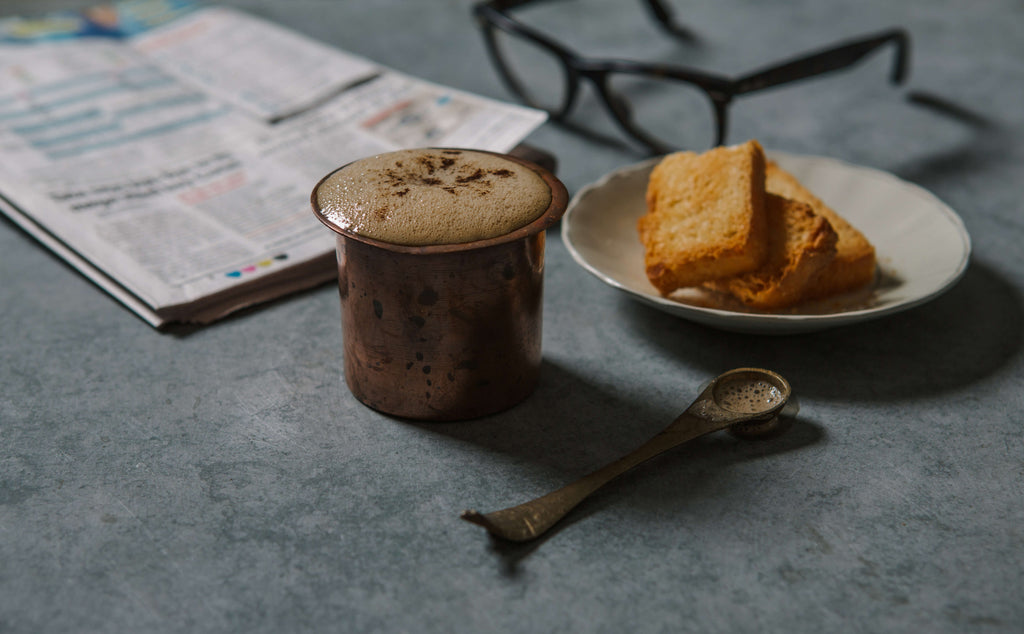
The Cult Of South Indian Filter Coffee

Filter coffee is not just another drink. Done right, it’s just as nuanced as a single malt or fine wine. Strong, smooth and rich, it boasts of strict quality standards, tradition and sentiment.
There is no doubt that the swanky, new coffee shops in India are eating into the traditional coffee market, but luckily, filter coffee loyalists are not looking to make the switch anytime soon. Even the most café-obsessed millennials will stop every morning for a cup of filter coffee at their local darshinis or eateries.
Hanging out a café or coffee shop is seen almost as an event, a social interaction that one enjoys with friends, as opposed to consuming filter coffee which is seen as a morning necessity.
Iced coffees may reign supreme in branded cafes, but filter coffee is best enjoyed steaming hot and ideally, with little to no sugar.
But this drink which has, over the years, lapped up fierce loyalists, self-confessed connoisseurs and coffee puritans who spend much of their time contemplating the proportion in which the varieties of beans should be ground, its storage, how often fresh coffee should be purchased, and the best way of savouring it, made headway into Tamil society only in the
early 1900s, say scholars.
So how did coffee, which traces its origin to Ethiopia, make headway in South India?
Simple. Colonialism — The cultivation of coffee and tea was described as a drink of the Europeans, before it percolated to the emerging Indian middle classes, and in some places, to the working class. When coffee came to be patronised by a class educated in modern schools and worked in jobs created by colonialism, it gained new cultural connotations, and came to be perceived as ‘modern’. Naturally, this modern drink came at a price because
unlike tea which brews better in water, coffee was brewed in milk. And milk was expensive.
As far as one can tell, Indians will evidently drink anything if it comes in milk, and coffee was no exception.
The Coffee Board came into being during World War II, when trade routes were disrupted, and filter coffee followed suit. Chicory began to be added to the coffee, bestowing upon the haloed brew more body, a touch of bitterness, and its strong, unmistakeable aroma.
According to Sandeep Srinivasa, a renowned coffee expert, chicory was widely used during economic crises such as the Great Depression in the 1930s and during World War II in Continental Europe, when coffee was in short supply. He opines that India possibly picked up a chicory blended filter coffee culture from the British, likely through Indian soldiers during
the world wars.
No matter the origins of how filter coffee came to claim South India as its bastion, the fact remains that, today, it is an integral part of South Indian culture. Firmly entwined with stories of mothers and grandmothers holding fast to the secrets of brewing the perfect cup and passing that knowledge down generations, when it comes to filter coffee, there is a deep sense of history and nostalgia that no iced coffee can ever hope to replace.
Get yourself a cup of fine filter coffee here.